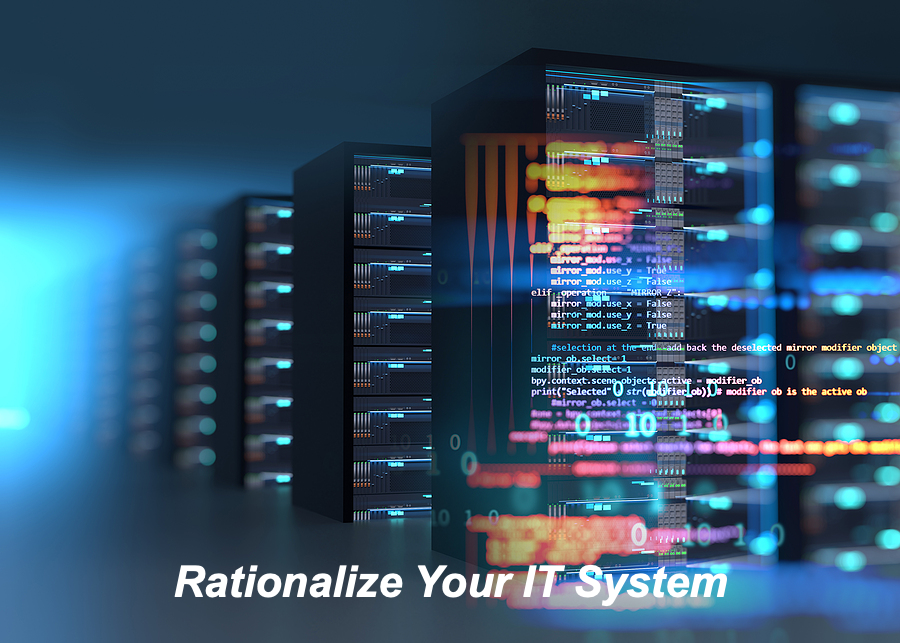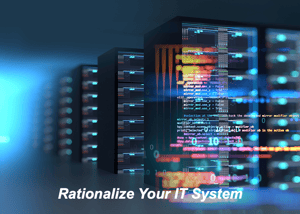
When your company’s network goes down repeatedly or an employee’s laptop is running too slowly, it may seem that the easiest solution is to quickly buy and install a replacement for the malfunctioning equipment.
But this kind of impulse purchase is unlikely to lead to the efficient, high-performing IT system that will make your business run smoothly. The goal is for your manufacturing systems, email, and finance systems to work, with minimal intervention from you or your staff, allowing your employees to work efficiently. And when an employee needs a laptop or the company needs a new phone system, it’s tempting to go with the lowest-cost, most readily available option.
The best way to get a smoothly functioning IT system, though, is not by purchasing system elements based on price from different vendors without asking how they work together. Instead, plan for an IT system that is well integrated and configured.
Rationalizing your IT system
 Start by creating a plan for your IT system – and then make sure you buy equipment that fits with that plan. This will keep you from creating bottlenecks and inadvertently slowing your system’s performance. It will also prevent problems like employees buying laptops that are not configured for remote support, for example. And it will likely save you money in the long run.
Start by creating a plan for your IT system – and then make sure you buy equipment that fits with that plan. This will keep you from creating bottlenecks and inadvertently slowing your system’s performance. It will also prevent problems like employees buying laptops that are not configured for remote support, for example. And it will likely save you money in the long run.
When rationalizing your IT system, it’s important to get input from experts who know IT equipment – including what types of equipment will work well together – and who also know your business. This will help you lower the total cost of ownership of the system, even after accounting for the time and money required for planning. With better system performance and fewer disruptions due to equipment problems or security breaches, your employees will be happier and more productive.
Seeking strategic IT system advice
Consider these four advantages to consulting with experts and creating a plan for rationalizing your IT system:
1) Create consistency. When employees choose computer equipment they will use on the job, your company can end up with a hodge-podge of equipment from different vendors, which can create extra work for those responsible for the setup and maintenance of the IT infrastructure. The more variations a system has in hardware and software, the harder it is to ensure robust operation over time. Configurations, network requirements, and even warranty information will likely be different for each piece of equipment, increasing the complexity and security risks.
2) Save time. It may seem as if pausing to create a plan will make your overall IT system upgrade take more time. But when a system is put together without first making sure all its components will work well together, for example, it can take the IT staff much longer to diagnose and solve performance problems. They may need to spend more time undoing previous efforts. Likewise, if you put together an IT system without a plan that takes into account your company’s plans for growth, you may soon find that your business requirements have outgrown your system. In the long run, starting with a clear plan will save time.
 3) Lower costs. How much does your IT system cost you? Although it’s tempting to evaluate costs by simply comparing the sticker prices of different devices, the reality is that for many devices, most of the cost is in the labor it takes to support it during the years it is used. In addition, for manufacturing companies, there are big costs associated with IT problems that keep production systems offline or prevent employees from doing their jobs. This means an IT system that requires less support and has less downtime will save quite a bit of money, even if the system itself is slightly more expensive to begin with. It’s most cost-effective to rationalize your IT system to improve performance, lower total cost of ownership, and ensure robust business operations.
3) Lower costs. How much does your IT system cost you? Although it’s tempting to evaluate costs by simply comparing the sticker prices of different devices, the reality is that for many devices, most of the cost is in the labor it takes to support it during the years it is used. In addition, for manufacturing companies, there are big costs associated with IT problems that keep production systems offline or prevent employees from doing their jobs. This means an IT system that requires less support and has less downtime will save quite a bit of money, even if the system itself is slightly more expensive to begin with. It’s most cost-effective to rationalize your IT system to improve performance, lower total cost of ownership, and ensure robust business operations.
4) Increase clarity. When your IT system lacks consistency, it creates confusion among employees, including the IT staff. Confusion can be expensive: It can lead to wasted time and money when a haphazardly designed system has to be redone, for example. How to avoid this? A clear plan for the IT system will help standardize the hardware and software, streamlining the support process and reducing costs.
For the best overall performance and reliability, get the advice of an experienced advisor to rationalize your IT system. Then follow the plan you and the advisor have devised when purchasing, configuring, maintaining and upgrading that system.
When you are considering an upgrade to your IT system, consider ways to rationalize the products and services you are using to improve the overall performance. After all, all IT systems are comprised on interconnected parts and any one weak point can create risk for the entire system and affect your business. Seeking more information about how to improve your IT system, please download the eBook titled "Built to Scale: IT System Designed for Growth" to learn more about improving your IT solution for better productivity that enables growth.



